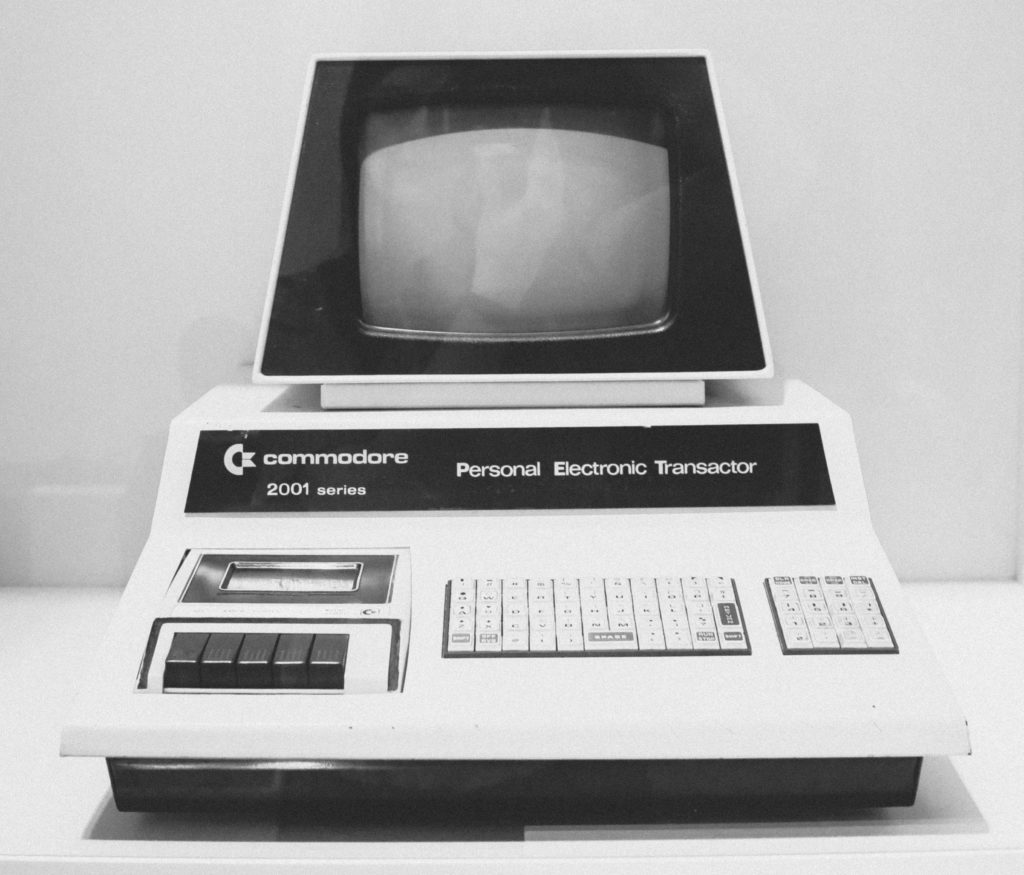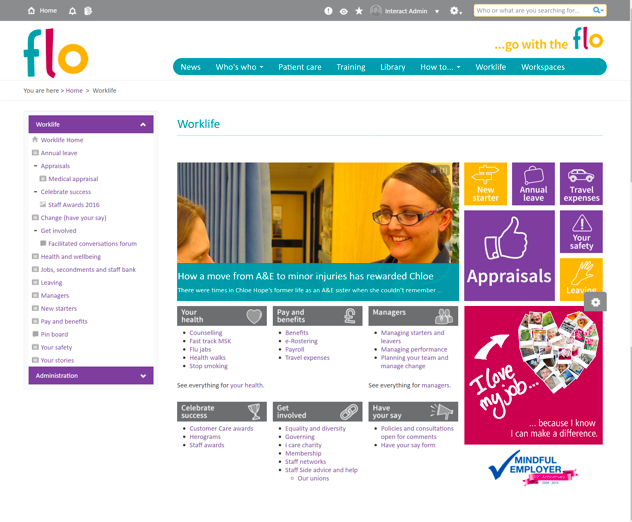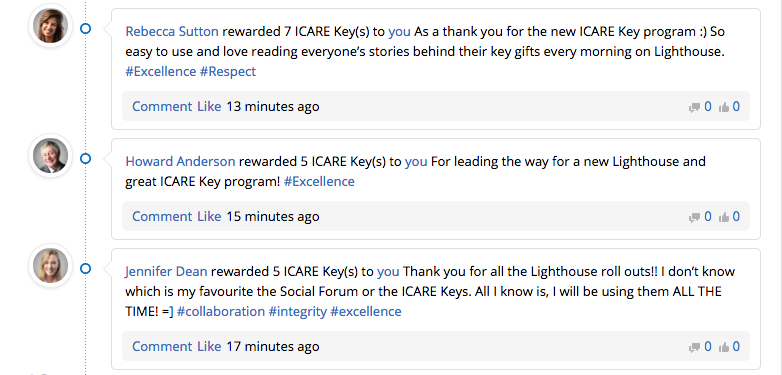How to overcome the old-school perceptions of the intranet
Think of an intranet and what do you picture? If you’ve never experienced a modern, social intranet, you may well imagine an old-school interface on a blinking, out-of-date computer or a dusty archive of staid company information… Do organizations even use intranets anymore?

Intranets first started appearing in businesses in 1994. Originally, they were to supply important, top-down information for staff to access at will.
The 1990s intranet model was a database. Staff names, contact details and a few documents relating to policies and procedures stored on a client-server application. It wasn’t until the internet was fully implemented in businesses that the more flexible web-based intranet was introduced. Since then, development has allowed a growth in functionality and supported features such as online discussions across geographically-dispersed workers, smartphone access, and dynamic homepages.
Despite intranets changing a lot over the two decades, a lot of businesses still retain old-style intranets and don’t realize the progression these systems have made in the interim.
Old intranet systems are criticized for a lot of things including:
- Poor search function
- Outdated
- No regional variations
- Clunky
- Uninspiring
- Text heavy
- Not interactive
They supply top-down information, providing a one-way communication between management and employees. And when you compare your old-school intranet with contemporary communication tools like Slack, Whatsapp, and Microsoft Teams, it’s inevitable that your antiquated intranet will be overlooked.
However, you could be missing out on valuable functionality that these other platforms cannot provide. To have an idea of how fundamental a modern social intranet is to a business, there are certain functions that a business cannot – and should not – live without.
The main four functions of the intranet should be:
- Business processes
- Information
- Collaboration
- Communication
If your intranet isn’t fulfilling these four main tasks, it isn’t working as a system. Sometimes, the best answer with a legacy intranet is to start all over again. However, a brand-new intranet takes time and costs money. Those driving a new system will need buy-in from stakeholders, the nod from IT and a budget approved. So, it’s important to understand the ways in which this investment will have a higher return and improve your system as a whole.
Business Processes

One of the ways your intranet can have a significant effect is through its streamlining of business processes.
Workflow and Forms – By making paper-based forms electronic and accessible through the intranet, you save valuable employee time as well as increase the accuracy of the information. And the confidence that all paperwork is in the one place.
Building forms – Drag and drop to create your own forms which can be multi-page and mobile-friendly. From purchase orders to company credit card requests, you can assign sign off permissions and alerts in a few clicks.
Status and actions – Save the time chasing overdue forms by setting reminders and allowing users to see the current status of all outstanding actions for their forms.
Kent Community Health NHS Foundation Trust uses their intranet, Flo, to centralize all business and HR processes. Employees can access benefit and payroll information, company policies, submit travel expenses and complete appraisals. All this creates huge and valuable time savings for staff as well as boost their productivity.

Information
One of the intranet’s traditional functions is to hold information for employees. However, now, instead of simple top-down information from management, you can use your intranet to be the go-to place where people go for all manner of knowledge seeking.
Integration – In order to increase engagement, your intranet should integrate all your business platforms and applications. From Skype to Dropbox, Office 365 and Google Drive, you can make sure that your intranet is the one point of contact.
Analytics – One of the most powerful reporting tools on Interact’s software allows you to identify popular content and contributors as well as flag issues. Being able to view data is a huge bonus when you’re working out how your intranet is performing, and how you can make it even better.
Collaboration

Nowadays, an intranet has the facility to be more social. Staff from all areas of the organization can contribute blogs, questions, and discussions about work and non-work-related stuff.
Peer-to-peer recognition – Interact’s software allows for peer-to-peer recognition, where employees can gift virtual tokens to each other to show appreciation and gratitude for work-related tasks. This is effective in highlighting the hard work and talent of people who quietly get on with their jobs in large organizations. It is also a powerful motivator and a compelling reason to visit the intranet regularly.
MidPen Housing, one of the leading non-profit developers, owners, and managers of high-quality, affordable housing in the US, implemented this feature into their intranet, Lighthouse, with great success. Their employees were handed twenty virtual keys each month to give out to their peers. These acknowledgments would have one of their company values hashtagged in, to highlight the value that the recipient was adding to the company. The keys are then exchanged for gift vouchers.

This simple reward scheme increased employee recognition from around 1% to 94%, allowing employees to feel rewarded and appreciated, and for employers to recognize the strengths and hard work within their organization more easily.
Likes and shares – An intranet is a great place to share ideas. Whether it’s answering a question or writing a blog, the like and share function is a great way of allowing ideas to gain traction. These signs of approval are social currency and will allow more people to take your work seriously.
Team spaces – break down the traditional silo structure by providing team spaces on your intranet for groups of common interest. This can be on a project, or to organize a social event, or even talk about a popular TV program. This enables employees to create their own communities and engage with others.
Communication
Your intranet should allow you to communicate across different teams, locations, and time zones to create a hub where employees gather to exchange information.
Desk vs. non-desk – It should also be equipped to engage desk-based workers, those on the move, or those on the shop floor who may have limited access to a computer. Your intranet should be able to transcend the traditional obstacles, regardless of role, device, or location.
Internet Broadcasts – Sometimes, a business must communicate critical information to its workforce. How does it make sure it reaches everyone, no matter how remote? Broadcasts help you get your message across via multiple channels and reach your people in an emergency or in times of crisis.
Acadian Companies have over 4000 staff spread across the US, and the necessity to account for and communicate with members of staff in a crisis came when Storm Harvey hit. The Hurricane affected the West Indies, Central, and South America as well as Texas and Louisiana – and many of Acadian’s staff were affected. Their intranet performed a valuable role as the central hub for employees to get assistance, and information and for colleagues to provide support to their peers.

Rather than be an abandoned feature within an organization’s infrastructure, a contemporary intranet is an integral part to a company. Allowing you to do things within your business that third-party applications cannot do. And from being impersonal and difficult to navigate – an intranet can revolutionize the way you work, allowing you to work closely with colleagues, access information more readily and cut down on superfluous admin work.
